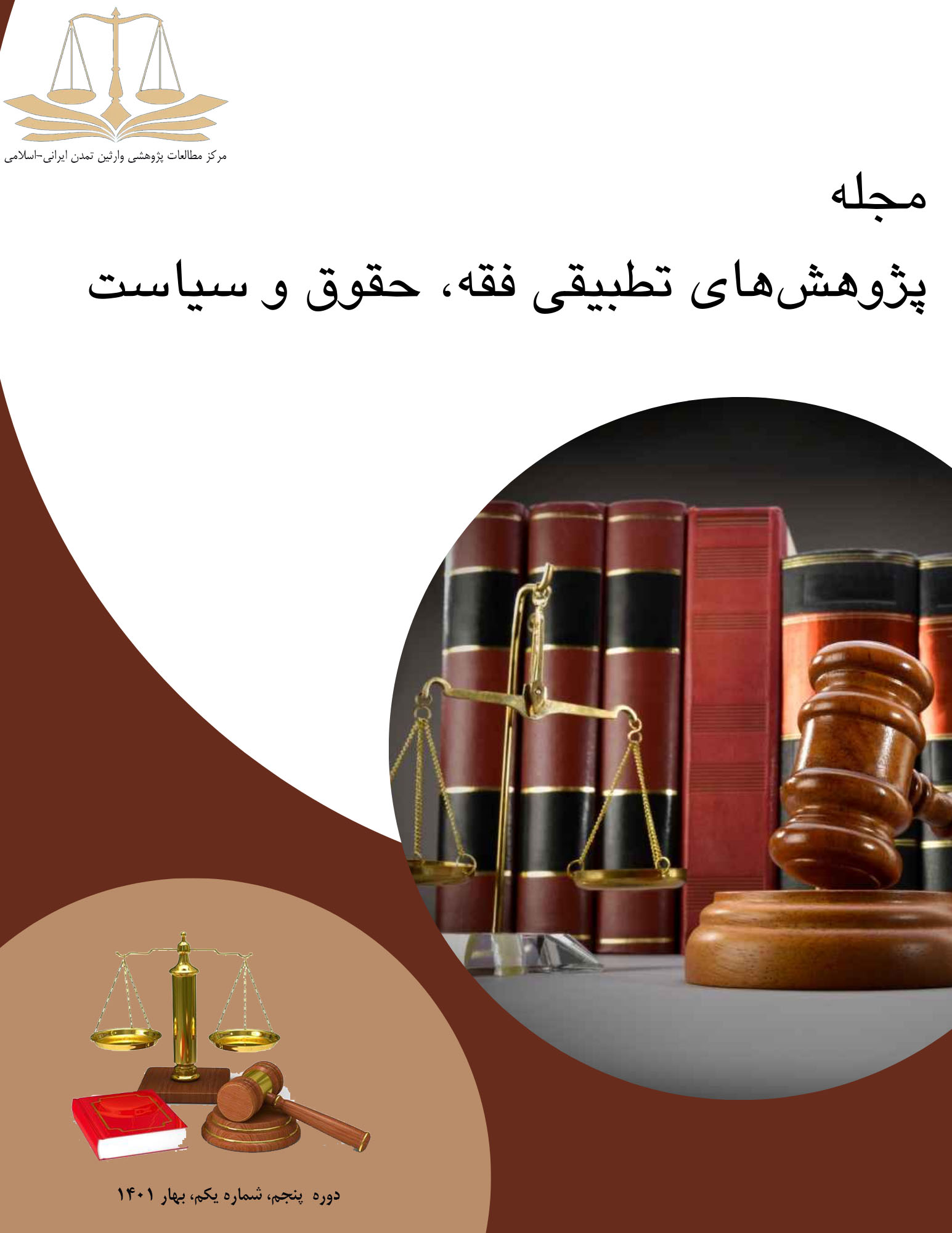Analysis of the Iranian Legal Approach to Protecting the Psychological Well-Being of Wives in the Family Environment
Keywords:
mental health, sexual violence, violence, family, threat, humiliation, insultAbstract
Violence against women's psychological well-being is one of the most significant forms of domestic violence, leading to long-term psychological consequences. Accordingly, the present article aims to analyze the Iranian legal approach to protecting the psychological well-being of wives in the family environment. This study is descriptive-analytical and employs a library research method. Instances such as verbal abuse and accusations of sexual infidelity, humiliation and insult, threats, authoritarian commands accompanied by humiliation, and female genital mutilation are among the behaviors that Iranian criminal law has criminalized to protect the psychological well-being of wives within the family environment. Criminal law has provided protection against certain offenses affecting the psychological well-being of wives; however, the absence of criminalization of marital sexual violence by husbands against their wives constitutes a legal gap in Iran’s criminal laws, particularly the Family Protection Law enacted in 2012. If the legislator’s objective in defining criminal provisions and offenses against wives in the Family Protection Law was to offer better and differential criminal protection for wives, then such conduct should have also been criminalized. Furthermore, since the burden of proof for offenses such as verbal abuse, accusations of sexual infidelity, humiliation, and insult rests on the wife, and given that such offenses do not leave permanent physical evidence, proving them presents a fundamental challenge.
References
Aghaeinia, H. (2015). Crimes Against Persons (Special Criminal Law - Moral Personality), Seventh Edition. Mizan Publications.
Aghaeinia, H. (2023). Special Criminal Law (Crimes Against Persons), Twentieth Edition. Mizan Legal Foundation Publications.
Ahadi, H., Khadiuzadeh, T. a., Seyedi Alavi, G., & Esmaeili, H. (2003). Female Circumcision in Minab (Prevalence - Awareness - Attitude). Journal of Qazvin University of Medical Sciences and Health Services, 7(28), 14-17.
Allameh Hilli, H. b. Y. (1998). Tabsirat al-Muta'allemin fi Ahkam al-Din. Islamiyah Bookstore.
Amid Zanjani, A. (2002). Political Jurisprudence, Volume 3, Third Edition. Amir Kabir Publications.
Awadh, A. I. (1998). Diyah (Blood Money), Translated by Alireza Feyz, Second Edition. Ministry of Culture and Islamic Guidance Publications.
Barzegar Bafrouei, S. (2003). Al-Kutub Al-Arba'a, Volumes 1 and 2, First Edition. Ansarian Institute.
Basami, M., Pashaei, T., Ghareh Tappeh, S., & Ghareh Tappeh, A. (2011). Female Circumcision from a Jurisprudential, Legal, and Medical Perspective. Journal of Medical Jurisprudence, 3(2), 171-193.
Bazgir, Y. (1999). Qisas (Retaliation) of Limbs, First Edition. Ghoghnoos Publications.
Behjat, M. T. (2014). Jame' al-Masael, Volume 3, First Edition. His Office Publications.
Eftekhari, M., Rafieipour, S., & Kermanchi, J. (2006). Translation of the WHO Global Report on Violence and Health. Farda Women's Health Research Center and Women's Life Improvement Institute.
Emami, S. H. (2006). Civil Law, Volumes 2 and 4, Sixth Edition. Islamiyah Publications.
Goldouzian, I. (2009). Special Criminal Law (Crimes Against Persons), Volume 2, Thirteenth Edition. University of Tehran Press.
Golpayegani, M. R. (1992). Al-Durr al-Manzood fi Ahkam al-Hudud, Volume 2, Third Edition. Dar al-Quran al-Karim.
Hashemi Shahroudi, M. (2008). Fiqh Encyclopedia Based on the School of Ahl al-Bayt, Volume 1, Third Edition. Ahl al-Bayt Encyclopedia Institute.
Hojjati Ashrafi, G., & Amiri, G. (1984). Collection of Legal-Criminal Laws, First Edition. Ketabkhaneh Ganj Danesh Publications.
Hurr Ameli, M. b. H. (1988). Wasa'il al-Shia, Volume 28, Tenth Edition. Ahl al-Bayt Institute.
Juba'i Ameli, Z. a.-D. b. A. (1993). Masalik al-Afham ila Tanqih Sharaye' al-Islam, Volume 1, Third Edition. Al-Ma'arif al-Islamiya Institute.
Kar, M. (1999). Elimination of Discrimination Against Women (Comparison of the Convention on the Elimination of Discrimination Against Women with Iranian Domestic Laws), Third Edition. Ghatar Publishing.
Katouzian, N. (2009a). Family Civil Law, Volume 1, Ninth Edition. Sherkat Sahami Enteshar Publications.
Katouzian, N. (2009b). Family Civil Law, Volume 2, Sixth Edition. Sherkat Sahami Enteshar Publications.
Majlisi, M. B. (1996). Hilyat al-Muttaqin, First Edition. Noor Mohabbat Publications.
Makki Ameli, M. b. A. (1996). Al-Ummah al-Dimashqiya. Dar al-Fikr.
Marashi Shushtari, S. M. H. (1997). New Perspectives in Islamic Criminal Law. Mizan Publications.
Mazaheri, M., & Mohajeri, M. (2013). Revisiting the Jurisprudential Basis of Moral Damage Compensation with a Focus on the Non-Financial Rights of Spouses. Journal of Islamic Jurisprudence and Legal Studies, 10(34), 129-152.
Mirkamali, S. A. (2017). The Jurisprudential and Legal Foundations of Criminalizing Marital Rape. Family Research Quarterly, 13(51), 389-405.
MirMohammadSadeghi, H. (2016). Special Criminal Law (Crimes Against Persons), Volume 1, Twenty-Sixth Edition. Mizan Legal Foundation.
Moghadami, N. (2013). Female Circumcision in Iran and the Need for Criminal Protection Against Female Circumcision Master's Thesis, Supervised by Professor Ali Gholami, Kerman: Shahid Bahonar University].
Mohaqqiq Hilli, H. b. J. (2007). Sharaye' al-Islam fi Masa'il al-Halal wa al-Haram, Volumes 1 and 2, First Edition. Rashid Publications.
Mousavi Khoei, A. (2001). Mabani Takmilat al-Minhaj, Volume 1, Sixth Edition. Imam Khoei Institute.
Mousavi Khoei, A. (2006). Mabani Takmilat al-Minhaj, Volume 2, Sixth Edition. Publishing and Printing, Beirut-Lebanon.
Najafi, M. H. (1983). Jawaher al-Kalam fi Sharh al-Shara'i al-Islam, Vol. 1, 42nd, Seventh Edition. Dar Ihya al-Turath al-Arabi, Beirut.
Nobahar, R., Shahbeigi, I., & Farajiha, M. (2019). From Prohibition to Criminalization of Sexual Assault in Marital Relations Under the Responsive Regulation Theory. Women's Research Journal, 10(3), 47-71.
Rahkeshay, H. (2016). The Role of Government Intervention in Domestic Violence Against Women from a Human Rights Perspective. Women's Rights Support Studies Quarterly, 2(4), 121-150.
Sa'di, A. H. (1987). Al-Qamus al-Fiqhi: Language and Terminology, First Edition. Dar al-Fikr.
Safaei, S. H., & Emami, A. (2009). Summary of Family Law, Tenth Edition. Mizan Legal Foundation Publications.
Shahidi, M. (2010). Effects of Contracts and Obligations, Third Edition. Majd Publications.
Tabrizi, M. J. (2006). Asas al-Hudud wa al-Ta'zirat, Second Edition. Author's Office.
Tusi, M. H. (1986). Al-Khilaf, Volume 2, Tenth Edition. Islamic Publications Office of the Seminary.
Validi, M. S. (2006). Special Criminal Law (Crimes Against Persons), Volume 2, Eighth Edition. Amir Kabir Publications.
Downloads
Published
Submitted
Revised
Accepted
Issue
Section
License
Copyright (c) 2025 کمال آقاپور (نویسنده مسئول)

This work is licensed under a Creative Commons Attribution-NonCommercial-ShareAlike 4.0 International License.








